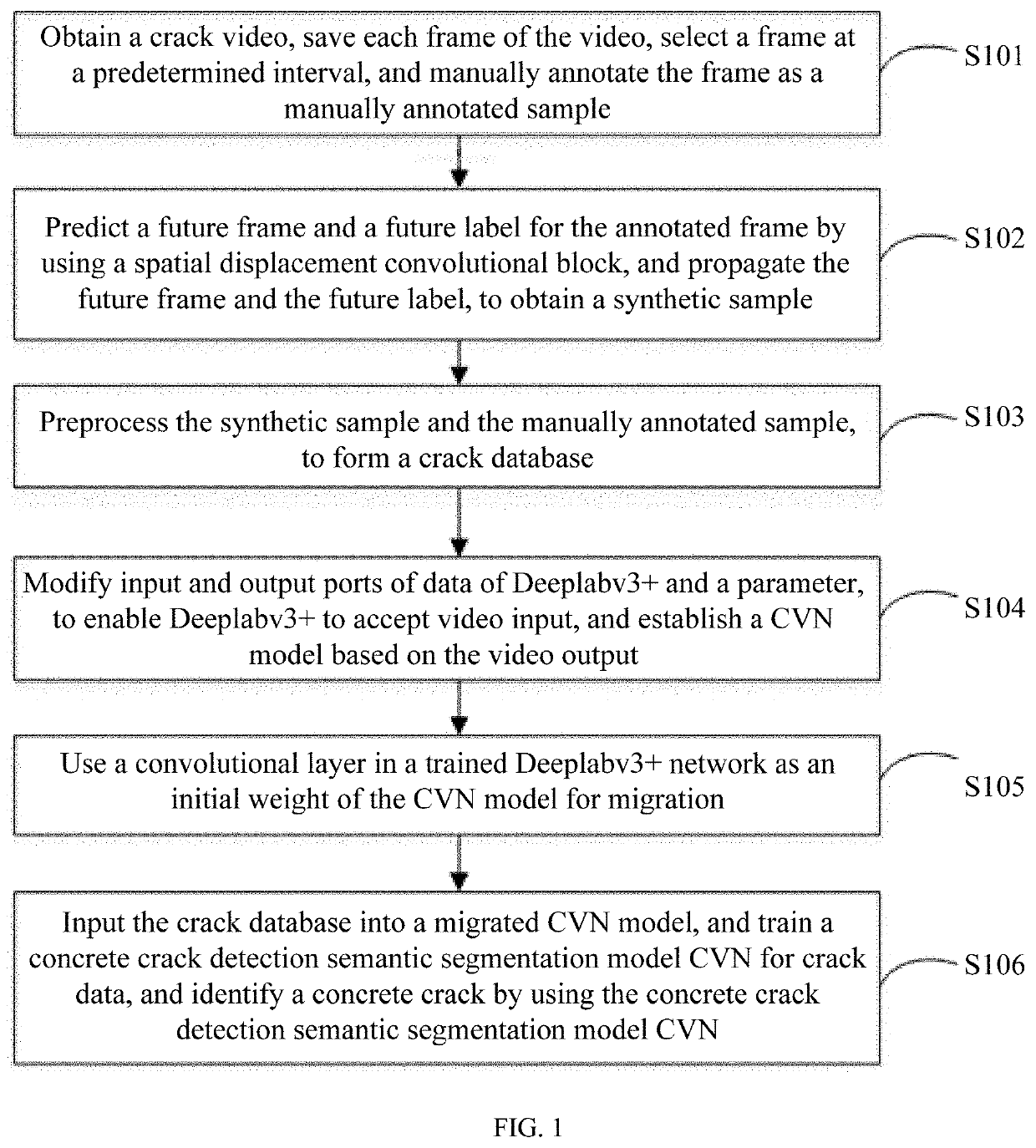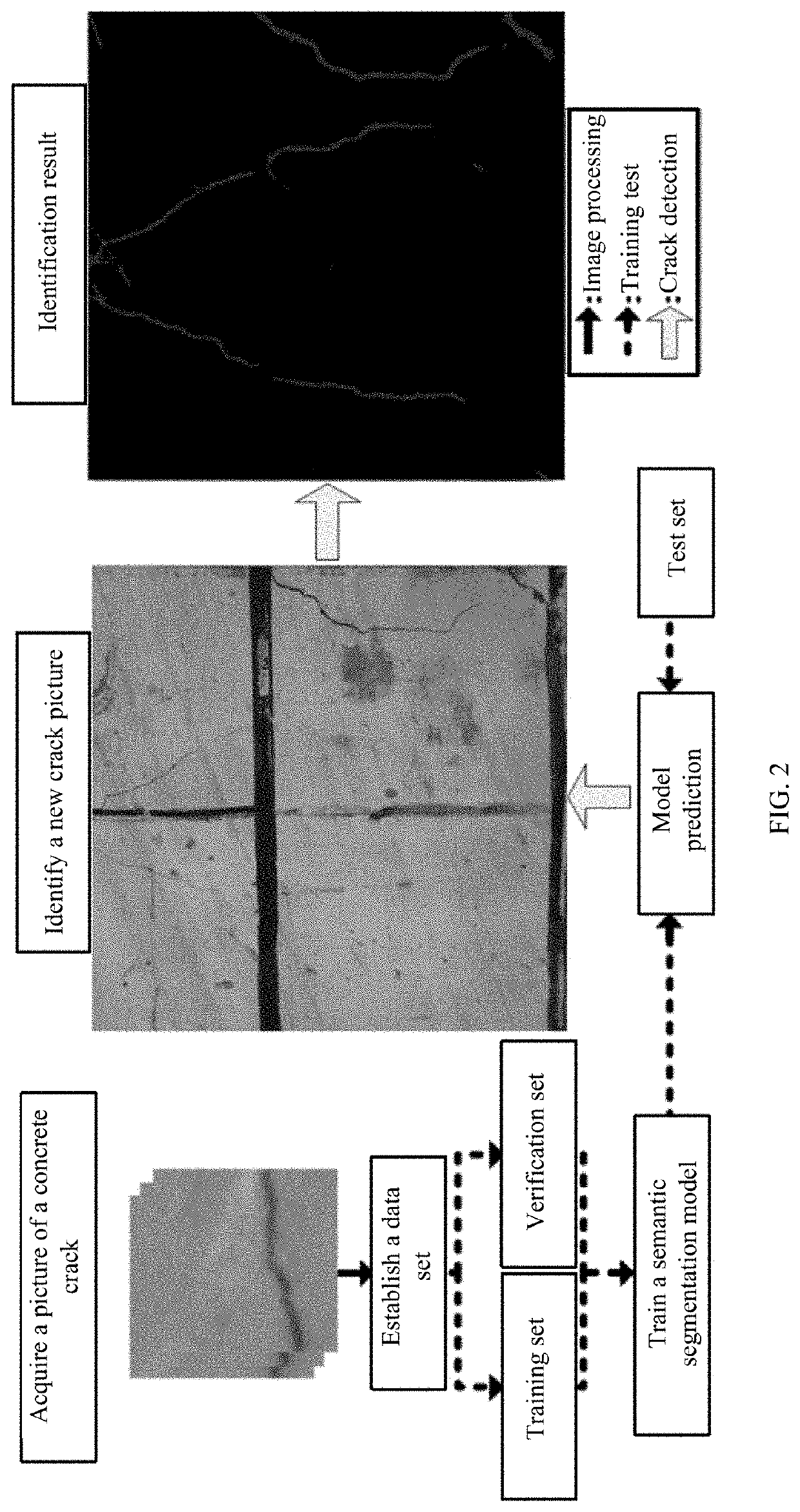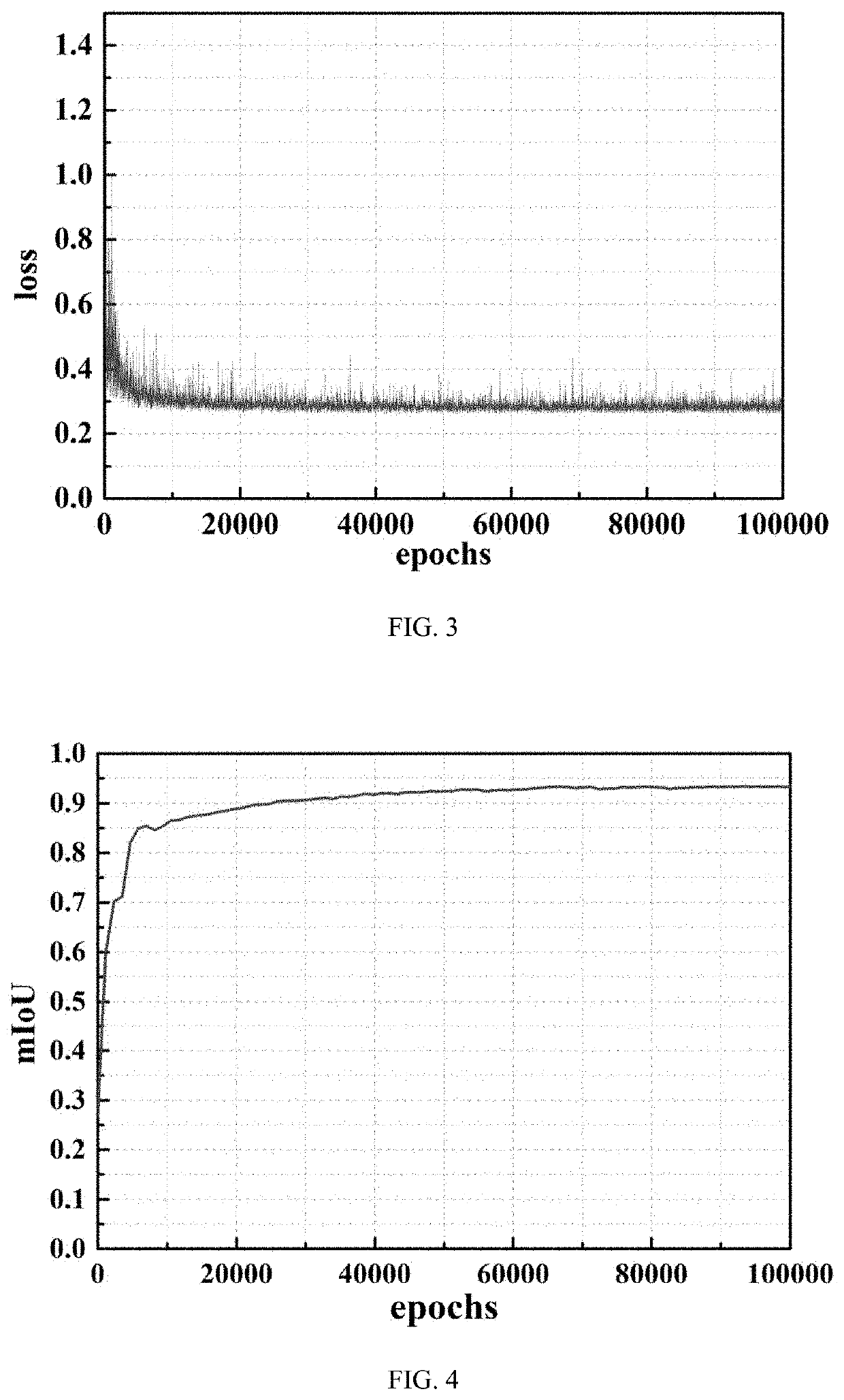Method and apparatus for identifying concrete crack based on video semantic segmentation technology
a technology of semantic segmentation and concrete, applied in the field of concrete structure damage detection, can solve the problems of low efficiency of traditional manual visual detection methods, frequent misses, and high cost, and achieve the effects of increasing prediction accuracy, high miou value, and effective reduction of required data
- Summary
- Abstract
- Description
- Claims
- Application Information
AI Technical Summary
Benefits of technology
Problems solved by technology
Method used
Image
Examples
Embodiment Construction
[0045]To make the objectives, the technical solutions, and advantages of the disclosure clearer and more comprehensible, the disclosure is described in further detail below with reference to the concrete crack examples. It should be understood that the specific examples described herein are merely intended to explain the disclosure, rather than to limit the disclosure.
[0046]For a current commonly used exhaustive deep learning convolutional neural network (CNN) method, a large quantity of data is required, computational costs are high, detection efficiency is low, and timeliness is poor. The disclosure is a method that can greatly reduce data required by a concrete crack deep learning model, and can greatly improve detection efficiency and timeliness. The method has strong robustness, a good generalization capability, and a crack detection technology with relatively high detection efficiency and accuracy. Moreover, the method is original and more suitable for engineering applications...
PUM
 Login to View More
Login to View More Abstract
Description
Claims
Application Information
 Login to View More
Login to View More - R&D
- Intellectual Property
- Life Sciences
- Materials
- Tech Scout
- Unparalleled Data Quality
- Higher Quality Content
- 60% Fewer Hallucinations
Browse by: Latest US Patents, China's latest patents, Technical Efficacy Thesaurus, Application Domain, Technology Topic, Popular Technical Reports.
© 2025 PatSnap. All rights reserved.Legal|Privacy policy|Modern Slavery Act Transparency Statement|Sitemap|About US| Contact US: help@patsnap.com



